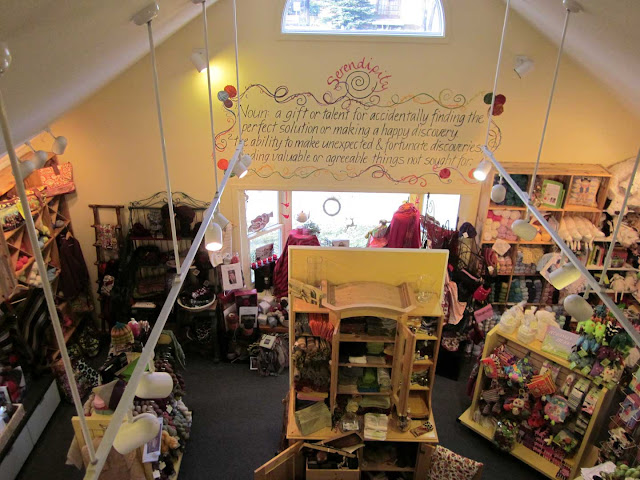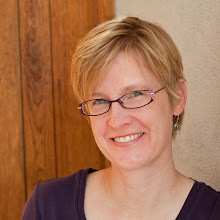I draw the initial design fairly small and then bring it to a photocopy place that makes blueprints to enlarge. They can get at least one dimension any size I want (and both dimensions if I keep my initial drawing in proportion). Then I transfer it to acetate (sometimes--sometimes I just use the paper... but have to remember to reverse the design as I weave from the back! Acetate you can just flip over before transferring it to the warp).
Friday, December 31, 2010
Tapestry cartoons
I draw the initial design fairly small and then bring it to a photocopy place that makes blueprints to enlarge. They can get at least one dimension any size I want (and both dimensions if I keep my initial drawing in proportion). Then I transfer it to acetate (sometimes--sometimes I just use the paper... but have to remember to reverse the design as I weave from the back! Acetate you can just flip over before transferring it to the warp).
Thursday, December 30, 2010
Further uses for ironing boards...
Monday, December 27, 2010
Opaque transparency and sandhill cranes
 |
| Westminster Presbyterian Church, Gallup, N.M. |
And on the way to Gallup for Christmas we stopped at the Bosque del Apache NWR to watch the sandhill cranes. This is something that I love to do. Their haunting cries and beautiful flight contrasts with their goofy landing gear and social behavior on the ground.
 |
| Cranes after evening fly-in |
Monday, December 20, 2010
Woven Transparencies
 |
| Anthem Rebecca Mezoff 17 x 28 inches; hand-dyed wool tapestry |
Off the loom and pressed, it looks kind of like this.
Sunday, December 19, 2010
Woven Stories
 |
| Left to right: Inscription, Halcyon Days II, Emergence II |
 |
| Contemplative Garden Rebecca Mezoff 30 x 48 inches, hand-dyed wool tapestry |
 |
| New Mexico holiday fire |
Thursday, November 25, 2010
Small tapestry and random Thanksgiving
I finished this little tapestry this month. It was inspired by a barn I saw in the Austrian alps. |
 |
| Barn Burned Down (now I can see the moon) 5 3/4 x 16 3/4 inches, hand-dyed wool |
And here is the random part...
Friday, November 19, 2010
Michaeliskirche revisited
 |
| Emmy and I hanging Contemplative Garden photo: Cornelia Theimer Gardella |
 |
| Michaeliskirche photo: Cornelia Theimer Gardella |
 |
| Left to right: Inscription and Emergence II (Rebecca Mezoff) and Wheelmaker I and II (James Koehler) photo: Cornelia Theimer Gardella |
 |
| James Koehler Harmonic Oscillation XLVIII-LIII |
 |
| Crowd listening to the organ concert at the opening photo: Wolfgang Theimer |
 |
| Frau Hecker pronouncing the show officially "open" photo: Hamish John Appleby |
 |
| James Koehler talking about his work at the opening photo: Hamish John Appleby |
 |
| Cornelia Theimer Gardella talking about her work at the opening photo: Hamish John Appleby |
 |
| The crowd in the courtyard photo: Hamish John Appleby |
 |
| photo: Hamish John Appleby |
 |
| James Koehler, Rebecca Mezoff, Cornelia Theimer Gardella photo: Hamish John Appleby |
International Quilt Study Center and Museum

The museum was beautiful. They have a collection of about 3500 quilts, a large gallery space that has innovative exhibits (we saw one about doll quilts—the newest exhibit, "Marseille: White Corded Quilting" was opening a few hours after we were there so we didn't get to see it), a large restoration room, a gift shop with books, a reading room, and a virtual room with a life-sized screen that showed the quilts of their collection. There were multiple interactive computer displays and two audio rooms where people could tell their quilt stories or listen to other people’s. I was intrigued by the study focus of the museum. The restoration room had huge tables for quilts to be spread out and a viewing window for the public to watch. The computer exhibits in the virtual room were just wonderful as was the ability to look at the entire collection of quilts projected life-sized.
The building was beautiful with a long stairway along the glass exterior wall.




I left with dreams of a similar space to celebrate, catalog, restore, and showcase tapestry. What better place than New Mexico since there is a long history of Hispanic, Native American, and European tapestry weaving here…
This visit brought up many questions for me (again) about fiber art, art vs. craft, professionalism, and funding for a project like this. This museum started with a large gift of quilts from a private donor and a promise from the University of Nebraska to maintain them. But Santa Fe is full of museums to all sorts of things, and perhaps a place like this devoted to furthering the art of tapestry could be successful in this state...
Sunday, November 14, 2010
America Tapestry Alliance Bienniel 8: A road trip to Nebraska
 This week I went to Lincoln, Nebraska to see the American Tapestry Alliance's ATB8 show at the Elder Gallery at Nebraska Wesleyan University. I am glad that I went (despite the 1700 mile total drive!). The show was inspiring and I was grateful to have the opportunity to study the tapestries first hand. There were many surprises as the tapestries are quite unlike the reproductions in the catalog. Don't get me wrong, the catalog is lovely, but the photographs don't capture the real feeling of many of the pieces--and how could they? You must experience tapestry in person.
This week I went to Lincoln, Nebraska to see the American Tapestry Alliance's ATB8 show at the Elder Gallery at Nebraska Wesleyan University. I am glad that I went (despite the 1700 mile total drive!). The show was inspiring and I was grateful to have the opportunity to study the tapestries first hand. There were many surprises as the tapestries are quite unlike the reproductions in the catalog. Don't get me wrong, the catalog is lovely, but the photographs don't capture the real feeling of many of the pieces--and how could they? You must experience tapestry in person.








































